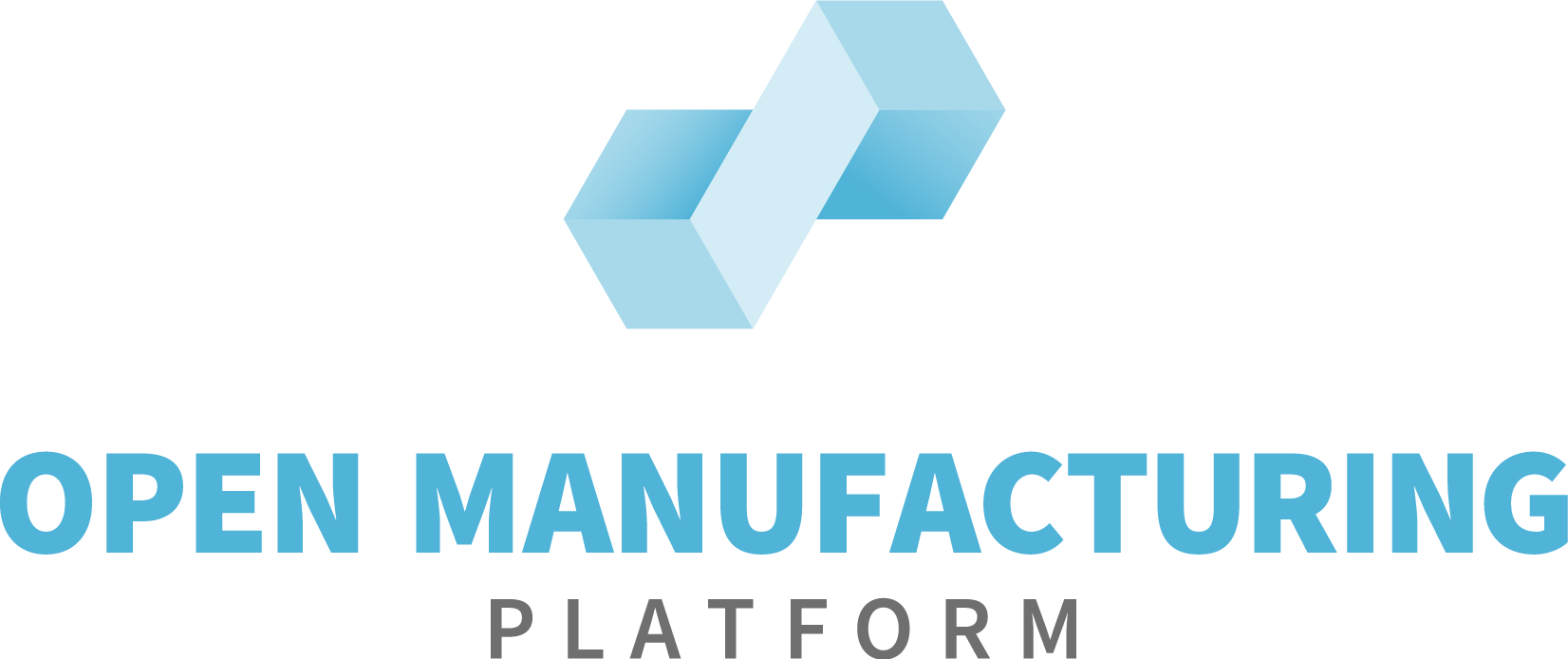Open Manufacturing Platform

Landing page for Open Manufacturing Platform in GitHub
Benefits and Drawbacks of Aspect Meta-Models in the Manufacturing Environment
Aspect Meta-Models and Digital Twins
(2022/10/29) - Aspect meta-models are a type of modeling language that can represent the different aspects of a digital twin, a digital representation of a physical system. In a manufacturing setting, a digital twin can be used to simulate the performance of a manufacturing system, such as a production line or a factory, to optimize its operation and predict its behavior.
The aspect meta-model approach allows for the representation of the different aspects of a digital twin, such as its physical components, their relationships, and the processes they perform, in a structured and modular way. This makes it possible to easily update and extend the digital twin as the manufacturing system evolves. For example, the aspect meta-model can be used to represent the different components of a production line, such as machines, conveyor belts, and sensors, and their interactions. This information can then be used to simulate the operation of the production line and identify potential bottlenecks or inefficiencies.
In addition, the aspect meta-model can also be used to represent the manufacturing processes performed on the production line, such as cutting, welding, and painting, and the materials and resources used in these processes. This information can be used to optimize the scheduling and allocation of these processes and predict their impact on the overall performance of the manufacturing system.
Benefits and Drawbacks
Aspect meta-models are a powerful tool in the manufacturing industry, allowing companies to understand better and optimize their production processes. These models, built using advanced machine learning algorithms, can analyze vast amounts of data to identify patterns and trends that may not be immediately apparent to human operators. This can help manufacturers improve efficiency, reduce costs, and increase the overall quality of their products.
One of the critical benefits of aspect meta-models is their ability to make predictions about future performance. By analyzing historical data and identifying common patterns, these models can provide manufacturers with valuable insights into how their production processes will likely behave in the future. This can help managers make more informed decisions about allocating resources, scheduling tasks, and optimizing production schedules.
Another advantage of aspect meta-models is their ability to identify potential problem areas in the production process. These models can help manufacturers identify bottlenecks, inefficiencies, and other issues impacting their operations by analyzing data from multiple sources. This can help managers address these problems before they lead to significant disruptions or costly downtime.
On the other hand, potential weaknesses to the aspect meta-model approach do exist. As with any model, the ability to generalize to new situations is challenging. For example, a model trained on a specific data type may perform poorly when applied to a different kind of data. Additionally, aspect meta-models, like all machine learning models, can be subject to over-fitting, which can lead to poor performance on unseen data.
One potential drawback of aspect meta-model technology is that it can be complex and difficult to understand, especially for non-experts. This can make it challenging to develop and maintain digital twins using aspect meta-models and can limit their accessibility to a broader audience.
Another potential drawback is that aspect meta-models can be limited in their ability to represent the complexity and dynamics of real-world systems. Aspect meta-models are designed to describe systems in a modular and hierarchical way. Still, more may be needed to capture a complex system’s full range of behaviors and interactions.
The OMP I4.0 Core Information Model Addresses Current Drawbacks
To help address some of these drawbacks, the OMP SDS Working Group published the I4.0 Core Information Model. It provides a common and standardized definition of relevant manufacturing entities, their attributes, and their relationships, including their semantic meaning. The contents of the information model are based on the IEC 62264-1 standard. The Information model is implemented in a set of modularized ontologies. This enables manufacturing enterprises to integrate data efficiently and provide a clear semantic context, thus reducing the time required to generate insights from the data. Furthermore, the OMP I4.0 Core Information Model allows companies to reuse data-processing applications across heterogeneous data sources. The standardized data model acts as an abstraction layer over the heterogeneous data decoupling data sources from data processing applications.

Use Cases
The information model is applicable to a variety of use cases including the following.
- Manufacturing Traceability: The OMP I4.0 Core Information Model provides model entities needed to implement manufacturing traceability, starting from the product model defining a recursive model of the assembled materials to the product segment model defining entities for the description of the result of manufacturing processes and individual parts assembly enabling a traceability at both the product definition and product instance level.
- Manufacturing Process Quality Monitoring: The I4.0 Core Information model provides the means to describe process chains, including process result parameters and their tolerances. This provides the basis for process quality monitoring use cases.
- Asset Inventory: The I4.0 Core Information Model provides with the physical asset model a good way to implement asset inventory use cases in which one needs to know which assets are located in which buildings and production lines.
- Production Planning: The I4.0 Core Information model can also be used for production planning. The process model provides a way to describe the general manufacturing processes, whereas the product segment model provides ways to describe concrete implementations of the process segments for concrete products.
Citations
- Aspect Meta Models in Manufacturing: An Overview. (n.d.). https://www.manufacturing.com/articles/aspect-meta-models-in-manufacturing-an-overview
- Benefits of Using Aspect Meta Models in Manufacturing. (n.d.). https://www.industryweek.com/technology-and-iiot/article/21026161/benefits-of-using-aspect-meta-models-in-manufacturing
- Aspect Meta Modeling: A Powerful Tool for Optimizing Manufacturing Processes. (n.d.). https://www.manufacturingglobal.com/automation/aspect-meta-modeling-a-powerful-tool-for-optimizing-manufacturing-processes Availability The OMP I4.0 Core Information Model is available at https://github.com/OpenManufacturingPlatform/sds-manufacturing-information-model.